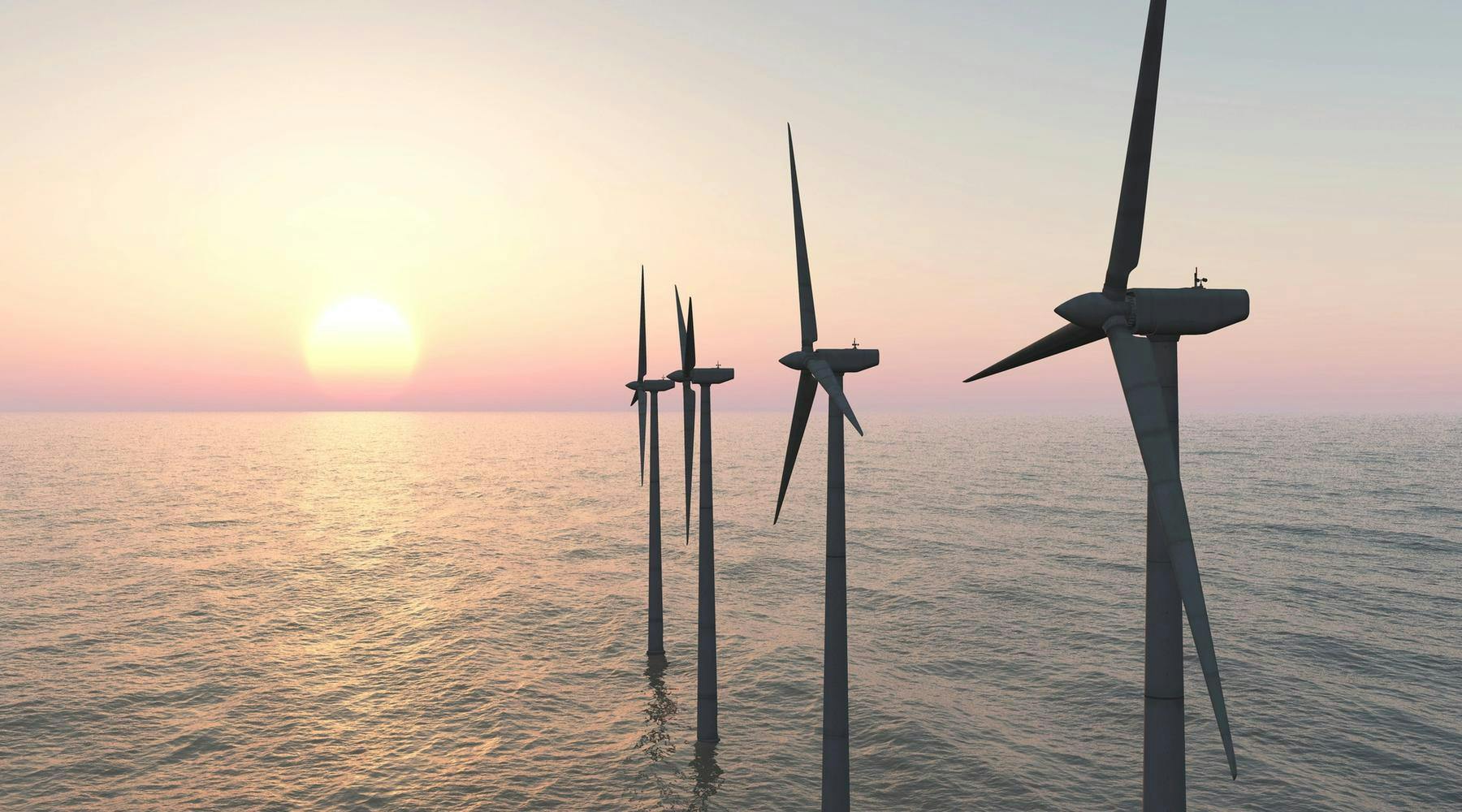The past 18 months have been hard for the offshore wind development community, with a range of challenges putting pressure on the cost of engineering, procuring, constructing and installing offshore wind. Global efforts to scale up the supply of offshore wind have also been limited by the cancellation of some high profile projects – including Ørsted’s Ocean Wind 1 and 2 in New Jersey and Vattenfall’s British Norfolk Boreas development in the UK.
“These recent failures demonstrate the complexity and the leadership challenge in scaling up offshore wind,” explains Kester Guy-Briscoe, a Principal for Gerard Daniels in London. “They also highlight the need for fresh thinking, strong leadership and continued collaboration in the quest to meet net zero targets.”
Despite recent setbacks, Kester believes that momentum continues to build and offshore wind remains an important part of the clean energy mix. “Last year the UK set a new wind energy record, generating 22GW of clean electricity in half an hour period to meet 56% of Britain’s electricity demand. Similarly Europe’s offshore wind industry brought a record 4.2 GW of new capacity online during 2023,” he says. “So, while challenges remain, these are examples of wind power taking centre stage to strengthen economies, improve energy security and diversify the clean energy mix.”
Challenges in scaling up offshore wind
Intermittent supply
Although offshore wind is well established in many jurisdictions, as a resource wind is naturally intermittent – sometimes it blows, sometimes it doesn’t! This makes sustainably scaling up the supply of and reliance on offshore wind quite challenging. “Compared to other green energy sources, the unpredictability of offshore wind can in theory lead to a lack of supply, or the oversupply of a grid,” says Kester. “To enhance its effectiveness and maximise the potential of offshore wind, there must be more focus on developing technologies like smart grids and high-capacity energy storage solutions, to allow excess energy to be held and released in line with demand.”
Macroeconomic challenges
Creative thinking is also needed to address the macroeconomic factors that challenge offshore wind development. “The energy sector may need to look beyond traditional funding models to attract commercial interest in offshore wind,” says Kester. “Working more effectively across regions to regulate and approve new developments must also be considered, as varying approaches add to the complexity of scaling up offshore wind.”
“Developing additional regionalised incentives schemes, like the Inflation Reduction Act in America, may also help to stimulate growth in this industry,” Kester continues.
Not a one-size-fits-all model
Another factor shaping the growth of offshore wind is the variation in geographical maturity. “In the UK and China for example, offshore wind is already quite a large and well established sector, so the challenge there is less about scaling up installation and more about maximising the effectiveness of storage and distribution,” says Kester. “Comparatively, the USA has few offshore windfarms (though significant onshore facilities), so their challenge is to establish new projects and build early momentum. While there is no one-size-fits-all solution, there are lessons to be learned from the regions where offshore wind is more advanced.”
Collaboration
Sustainable growth in offshore wind will require stronger partnerships across industry. “The world seems to be in a rush to develop the tallest turbines and the largest offshore wind farms, but this focus is far too narrow,” says Kester.
“Given the intermittent nature of offshore wind and the complexity of integrating renewables into the wider energy mix, a much more collaborative approach is needed. To realise the potential of offshore wind, turbine manufacturers, producers, environmental agencies, governments and the national grids must work together, with the shared goal of scaling up the supply, distribution and crucially storage distribution of power generated by offshore wind,” Kester continues. “And to achieve this, we need the right leaders with the right skills and experience, and the ability to bring diverse interests together.”
Finding the right leaders, building the right teams
Future energy sector leaders will experience many challenges in meeting net zero targets, and the right type of leaders are needed to deliver on this agenda. Historically, Kester has seen two distinctly different types of leaders moving into offshore wind: those with an environmental or renewable energy background, and those moving across from traditional energy sectors like oil and gas.
“As the reliance on fossil fuels declines, there will be a pipeline of talent coming out of the traditional energy sectors that can be repurposed and upskilled to lead offshore wind,” says Kester. “Given the relative maturity of the offshore wind market in some geographies, there will also be opportunities for individuals with strong project level experience to move into leadership roles, in regions where offshore wind is still maturing and therefore secure their own career advancement.”
“Regardless of your background, if you are looking to move into offshore wind you must have strong influencing skills and be able to build diverse relationships at all levels,” Kester continues. “You must also have a strong and proven ability to foster collaboration across diverse stakeholders, and understand how to navigate partnerships within both the public and private sectors.”
Gerard Daniels has a strong international network of executive talent with offshore wind experience, and transferrable skills from across the traditional energy sector. Connect with Kester to discuss your next leadership opportunity, or to build the capacity of your leadership team.







